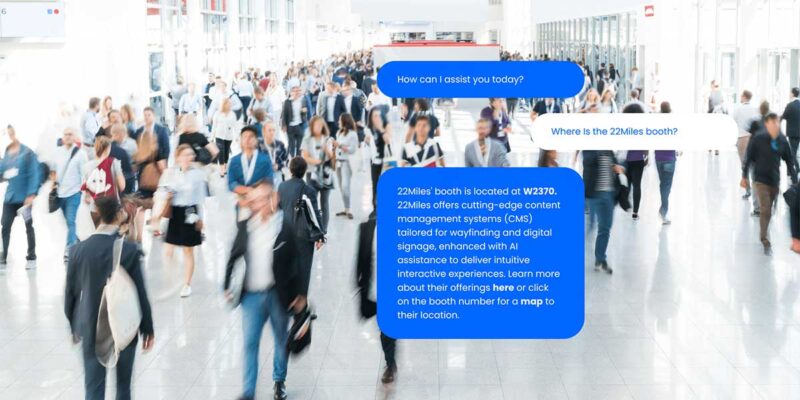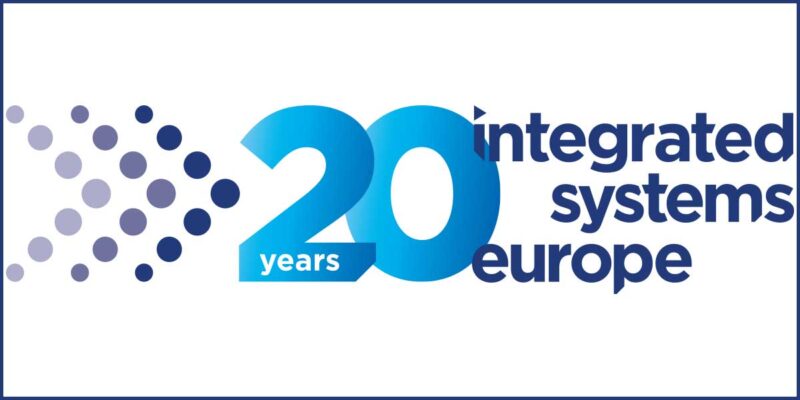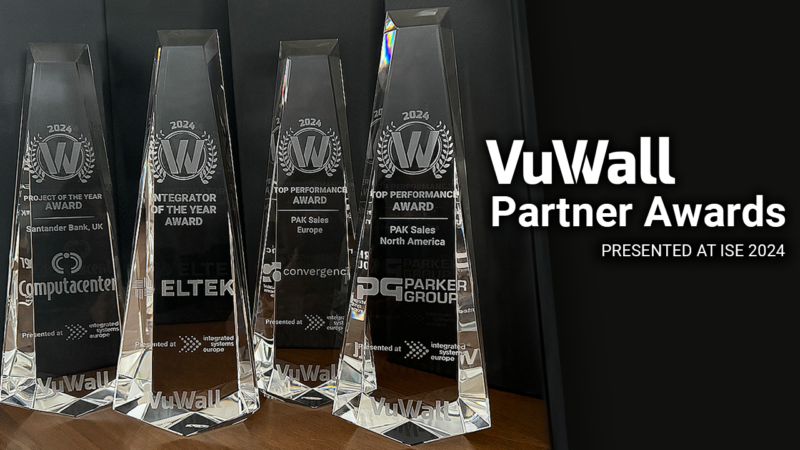A Visit to Barcelona, ISE’s New Home (As of 2021)
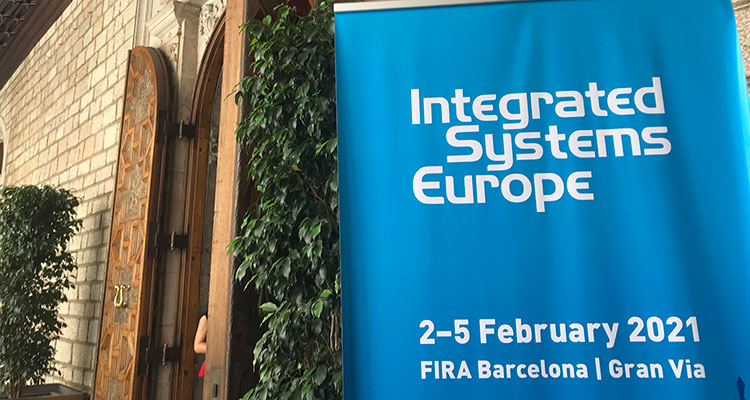 This past week I was in Barcelona for ISE’s announcement that the show would move there icapitaln 2021 after 14 years in Amsterdam. We were under strict non-disclosure from telling anyone we had been invited there — we hadn’t been told what the announcement was, but it certainly wasn’t hard to guess — but then the local newspaper in Barclona reported the news early.
This past week I was in Barcelona for ISE’s announcement that the show would move there icapitaln 2021 after 14 years in Amsterdam. We were under strict non-disclosure from telling anyone we had been invited there — we hadn’t been told what the announcement was, but it certainly wasn’t hard to guess — but then the local newspaper in Barclona reported the news early.
 The move isn’t very surprising — recent visitors, and particularly exhibitors, know that ISE has pushed the physical bounds of its home in the Amsterdam RAI for years now, with waiting lists for new exhibitors and a moratorium on increased stand/booth sizes, even with the addition of new halls and temporary ones out front. There was a move to add a fourth day in recent years, and attendance topped this year. Growth has remained 10 percent year over year, even with the space limitations. Amsterdam is a popular destination for the show — after a year in Geneva and a year in Brussels, it became the permanent home for the show in the third year. The main issue with the location is the physical size of the RAI.
The move isn’t very surprising — recent visitors, and particularly exhibitors, know that ISE has pushed the physical bounds of its home in the Amsterdam RAI for years now, with waiting lists for new exhibitors and a moratorium on increased stand/booth sizes, even with the addition of new halls and temporary ones out front. There was a move to add a fourth day in recent years, and attendance topped this year. Growth has remained 10 percent year over year, even with the space limitations. Amsterdam is a popular destination for the show — after a year in Geneva and a year in Brussels, it became the permanent home for the show in the third year. The main issue with the location is the physical size of the RAI.
So what does this move mean for attendees and exhibitors? Let’s do a comparison, starting with the most obvious, venue.
Fira Barcelona vs. Amsterdam RAI
Fira Barcelona has two major exhibition centers in Barcelona, with one being in the city center and one being a bit farther outside of it to the south. The latter, known as Gran Via, will be ISE’s new home. It has eight halls and 240,000 square meters of exhibition space. The Amsterdam RAI currently has 12 permanent halls (I believe there were 15 with the temporary ones at ISE 2018) and 112,000 square meters of exhibition space. ISE Managing Director Mike Blackman told me the new location would have twice the space available, which is confirmed by the Fira Barcelona statistics, so there’s plenty of room for ISE to grow. Fira Barcelona at Gran Via also has 45 restaurants and nearly 5,000 parking spaces.
Transportation to the show will be available via taxi and bus, as usual, and also via metro. Fira Barcelona General Manager Constantí Serrallonga told visiting press that a new metro line will connect directly to the Gran Via location and be able to transport up to 7,000 people per hour there.
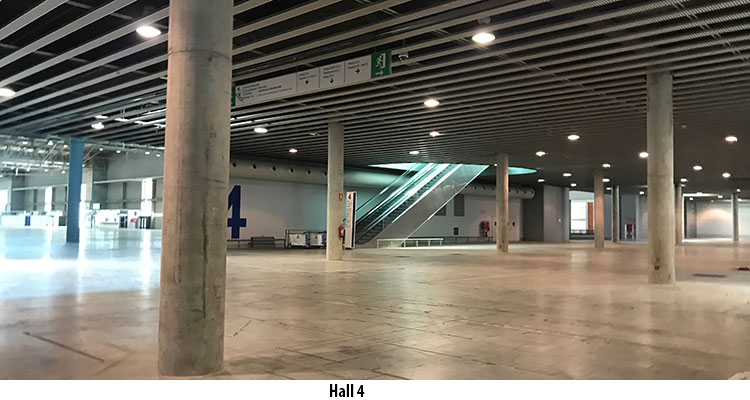 Like the RAI, Fira Barcelona’s Gran Via location is not in a very touristy neighborhood. There are hotels across from the exhibition center, but the area has an office-park like feel to it. There is a huge IKEA across the street (useful for last minute exhibit furniture?). Many attendees and exhibitor personnel will probably prefer to stay farther away, in some of the more attractive neighborhoods north of the exhibition center. Barcelona is a beautiful city and those who wish to make the most of visiting there will want to stay elsewhere, which means longer transportation times.
Like the RAI, Fira Barcelona’s Gran Via location is not in a very touristy neighborhood. There are hotels across from the exhibition center, but the area has an office-park like feel to it. There is a huge IKEA across the street (useful for last minute exhibit furniture?). Many attendees and exhibitor personnel will probably prefer to stay farther away, in some of the more attractive neighborhoods north of the exhibition center. Barcelona is a beautiful city and those who wish to make the most of visiting there will want to stay elsewhere, which means longer transportation times.
 Like the RAI, there are multiple halls here. Fortunately, they are each quite large, and also arranged in a linear format. It remains to be seen once the halls are filled with stands, but even despite my horrible sense of direction, I feel confident I’ll get lost less often here than in the RAI. The linear format does still mean a lengthy walk from the front of the first hall to the end of another — those of leaving only a couple minutes between meetings will still be hoofing it if they don’t plan accordingly.
Like the RAI, there are multiple halls here. Fortunately, they are each quite large, and also arranged in a linear format. It remains to be seen once the halls are filled with stands, but even despite my horrible sense of direction, I feel confident I’ll get lost less often here than in the RAI. The linear format does still mean a lengthy walk from the front of the first hall to the end of another — those of leaving only a couple minutes between meetings will still be hoofing it if they don’t plan accordingly.
Cost of Attendance
After more than a decade in the Netherlands, exhibitors have made adjustments to minimize shipping and transportation costs to the show in Amsterdam, often renting equipment back from local customers or distributors to use. Attendance from Spain at ISE has not been extremely high traditionally, despite industry there, and ISE hopes that the relocation will spur Spanish attendance. Anecdotally, the cost of air travel to Barcelona should be similar to that of Amsterdam for those coming from the east and west.
Once here, attendees and exhibitors should find Barcelona to be less expensive than Amsterdam. Based on my research, hotel prices here in July, the height of the summer tourist season, are less than that on average than those during ISE in Amsterdam in February. The exhibition itself will certainly increase winter hotel prices, but it should still be significantly less than Amsterdam. Food and drink are also less expensive. The economy here seems more cash-based, however, and very few places take American Express, commonly used by US-based businesses for company credit cards.
Taxis are almost exclusively cash-based, and ride sharing services are less common. Uber is here, but only returned this year after a protracted fight with the city, and prices are high and cars are hard to come by. I have to say I found Uber in Amsterdam to be extremely convenient once it became available a few years back, especially for those of us who work very late at the convention center itself. Taxis can be hard to come by at an isolated convention center when it’s 1 a.m. (speaking from experience here).
Barcelona vs. Amsterdam
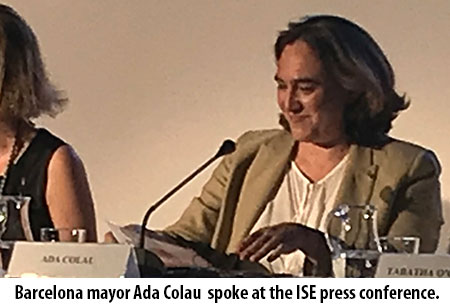 Like Amsterdam, Barcelona is a lovely city, with much to do, much to eat and much to see. Attendees should find plenty to do in their spare time.
Like Amsterdam, Barcelona is a lovely city, with much to do, much to eat and much to see. Attendees should find plenty to do in their spare time.
Barcelona is a much larger city than Amsterdam, with nearly twice the population (867,000 in Amsterdam vs. 1.6 million in Barcelona). It’s the 6th largest city in Europe and the capital of Catalonia. It is much more spread out. This means more hotel, restaurant and venue choices for exhibitors and attendees, but it also is harder to get around than Amsterdam — it’s not as easy to walk the entire city center. Traveling to the exhibition center itself will probably be one of the biggest challenges for those attending.
(Side note: There are bicyclists and bike lanes here as well, but I felt much less likely to be accidentally run over by a bicycle here.)
A huge benefit — weather should much better. The average temperature in Barcelona in February is in the mid-teens Celcius (the 50s Fahrenheit), and should be less rainy. The days are a little longer too, with the sun setting after 6 pm (18:00) so some of us may actually get to see daylight.
One big issue — Barcelona is known for pickpocketing. I was warned of this by several European members of the press and by multiple city vendors when out and about. It made me very paranoid, so I am leaving (knock on wood) with my phone and wallet intact, but the statistics are real. Tourists are of course a huge target, and certain neighborhoods are known to be worse than others. Violent crime is low, but ISE visitors will want to be vigilant when it comes to their on-person valuables and leave passports in hotel safes.

I’ll Be Happy to Return
All in all, we knew a move was coming for our beloved European trade AV show. I have loved traveling to and getting to know Amsterdam and will miss my annual visits there. But from what I’ve seen of Barcelona so far, I’ll be happy to be back here in a few years.
See our coverage of ISE 2018 here.
Watch a video I did with Mike Blackman here in Barcelona about the move here:



